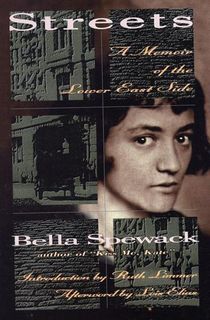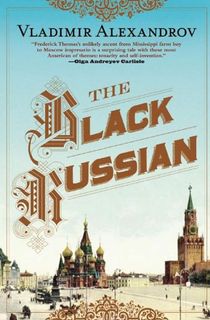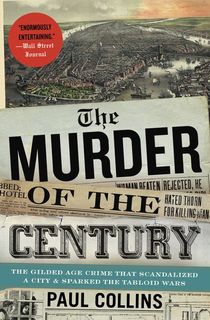It’s hard to quantify just how much the world transformed as we went from the 19th century to the 20th. The modern age truly kicked off during this transitional period, with earth-shattering evolutions on all matters, from media and communication to workers’ rights and much more. To sum it all up in one mere book would be an impossible task, so we’ve chosen eight titles that tell different true stories about the turn of the century, the people who made it happen, and how its changes have reverberated through to modern times.

A Nervous Splendor
On January 30th, 1889, the glamorous revelry of the iconic Viennese Carnival held the city in thrall. But a short distance away from the capital, a starkly different scene was taking place. Archduke Rudolf, Crown Prince of Austria, fired a revolver at his teenaged mistress and then turned the gun on himself. The ensuing scandal made international headlines and changed the face of the Austrian monarchy forever.
Related: 5 Royal Scandals Throughout History
It is this incident that planted the seeds for the fallout that would eventually destroy the royal family and incite the war to end all wars. Frederic Morton tells the story of the doomed prince and other notable figures moving through turn-of-the-century Vienna in a narrative "as lush, beguiling, and charming as an emperor's waltz" (Publisher's Weekly).

Love, Fiercely
Edith Minturn was an American philanthropist and socialite who modeled for various artists. In 1895, she married Isaac Newton Phelps Stokes, an architect at the forefront of housing reform. Together the Stokes battled on behalf of New York’s poor as they rode the wave of opulence, economic growth, and reinvention throughout America's Gilded Age. Jean Zimmerman's biography of the couple puts their romance front and center, revealing that sometimes, true love stories are far greater than the ones we make up.

Streets
Born in Transylvania in 1899, Bella Spewack arrived on the streets of New York's Lower East Side when she was three years old. As an adult, she worked as a reporter with her husband Samuel Spewack. Together, they wrote stories, screenplays, and journalistic reports on tumultuous political changes across Europe. Their most famous work was the beloved Tony Award-winning musical Kiss Me, Kate.
Related: 10 Fascinating Books About Immigration
During this time, Bella wrote a memoir of her childhood. It wasn't until the 1990s, after her death, that Streets was published. In it, she details life as a young Jewish immigrant in turn-of-the-century America and how her early experiences shaped her later work.

The Black Russian
Frederick Bruce Thomas was an African American man born to former slaves in 1872. After his father's murder, he left his parents' Mississippi farm and eventually found his way to Russia, where he operated a number of successful theaters and restaurants for 19 years. He became immersed in Russian culture and even changed his name to Fyodor Fyodovovich Tomass.
The Bolshevik Revolution saw Thomas lose his fortune and social status, which caused him to flee to Istanbul. He tried to return to America, but his passport was denied due to his parents' former slave status, and he eventually died abroad in a debtor's prison. Thomas's rags-to-riches and back again story is a fascinating one, and his status as "the Black Russian" remains an intriguing and largely forgotten account of turn-of-the-century Black American history.

Triangle
On March 25th, 1911, a fire broke out at the Triangle Shirtwaist Factory in New York City’s Greenwich Village. The fire caused the deaths of 146 garment workers, the vast majority of whom were women; many of the victims were also young immigrants between the ages of 14 and 23. The deadly disaster led to legislation requiring improved safety conditions for garment workers and increased the power of the International Ladies' Garment Workers' Union. David von Drehle's book examines the tragedy, the fallout, and the subsequent women-led push for labor rights.
Related: The Triangle Shirtwaist Factory Fire: New York City’s Deadliest Industrial Disaster

When the Astors Owned New York
Endowed with the largest private fortunes of their day, William Waldorf Astor and his cousin John Jacob Astor IV were the celebrity socialites of their era, with their every move followed by an eager public. The feuding Astors competed in every aspect of life, most notably in their building of opulent hotels throughout New York City. The iconic Waldorf-Astoria on Fifth Avenue became the ultimate hotspot for the rich, famous, and infamous of the era. Pulitzer Prize-winning historian Justin Kaplan digs into the extraordinary history of these two cousins, from the Gilded Age to the Roaring Twenties.
Related: 10 Books About Powerful Families

Death in the Haymarket
On May 4th, 1886, a bomb exploded at a peaceful Chicago labor rally, wounding dozens of policemen, seven of whom eventually died. What ensued was a wave of nationwide hysteria that led to a serious knockback on the labor rights movement of the era. The Haymarket affair is widely considered to be one of the most influential moments in the history of workers' rights in America. Historian James Green’s book digs into the day that continue to impact labor movements in the 21st century.

The Murder of the Century
On the afternoon of June 26th, 1897, two boys playing at a pier discovered a dismembered human torso floating in the water. Severed limbs were found by blueberry pickers in a nearby ditch. The case baffled detectives, gripped the nation, and became fodder for a media battle between newspaper moguls Joseph Pulitzer and William Randolph Hearst. What emerged was a sensational love triangle and an even more sensational trial that set the precedent for the frenzied coverage of true crime in our era. The Murder of the Century reveals how the tabloid wars of today got their footing decades ago and continue to influence how we perceive the truth.
This post is sponsored by Open Road Media. Thank you for supporting our partners, who make it possible for The Archive to continue publishing the history stories you love.


